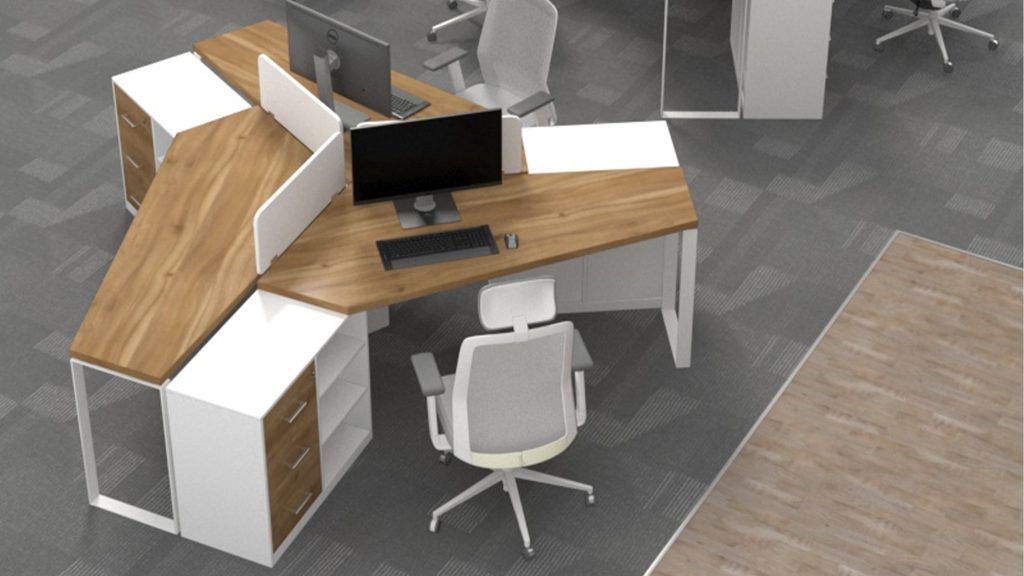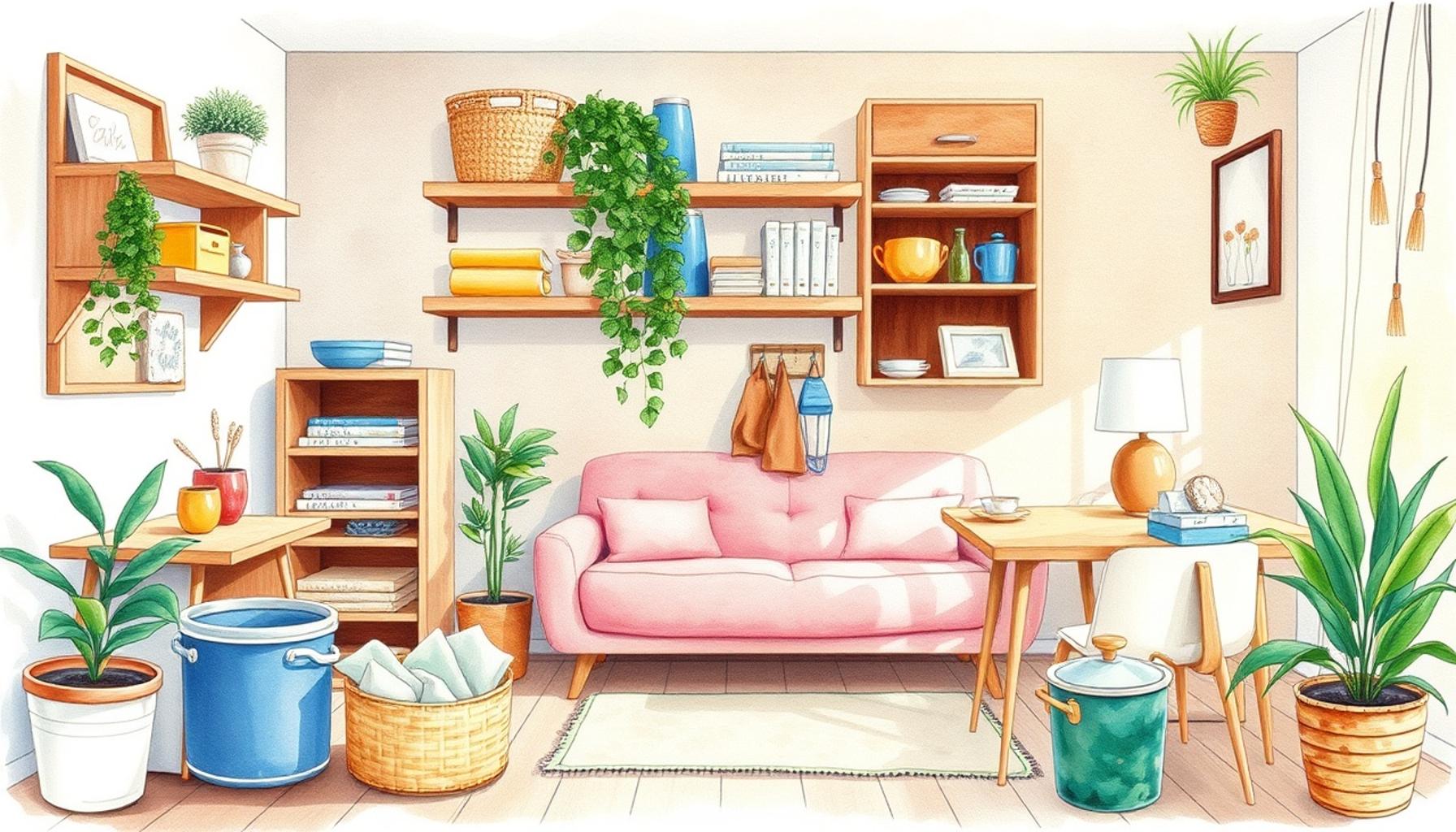Minimalist Shared Space Tips for Maintaining Organized Bliss

Discover the Art of Minimalist Living
In an era where clutter often reigns supreme, minimalism offers a refreshing perspective on living harmoniously in shared spaces. Imagine a home where every item has its purpose—a sanctuary free from distractions and chaos. This is not just a dream; it is achievable with the right strategies. Minimalist living transcends the mere act of decluttering; it fosters a lifestyle centered around simplicity and intentionality, allowing individuals to focus on what truly matters.
Benefits of Embracing Minimalism
Creating a minimalist shared environment can transform your daily life in several ways:
- Enhanced Focus: A tidy space promotes a clear mindset. In a world filled with stimuli vying for our attention, having a well-organized environment minimizes distractions and facilitates better concentration. For instance, studies have shown that people working in decluttered offices experience enhanced productivity, as they can zero in on their tasks without the noise of unnecessary items.
- Reduced Stress: Less clutter means less overwhelm. Numerous psychological studies suggest a direct correlation between a messy environment and increased stress levels. When you embrace minimalism, you might find that your anxiety decreases, as your home becomes a place of peace and tranquility.
- Improved Collaboration: Shared spaces become more functional and inviting. In homes where multiple individuals reside, be it families or roommates, minimalism encourages a sense of community. It nurtures cooperation among housemates by clarifying the purpose of shared spaces and reducing disputes over clutter.
To achieve organized bliss, consider specific tips that cater to the needs of all inhabitants. Effective communication and cooperation are key to maintaining a lifestyle that benefits everyone. Discuss the importance of minimalism with all members, ensuring everyone understands the advantages of living mindfully.
Essential Tips to Navigate Shared Minimalism
Here are a few strategies to kickstart your journey:
- Define Shared Areas: Clearly mark spaces for communal use. Designate particular areas in your home, such as the living room or kitchen, where clutter is not tolerated. This can open a dialogue about how to best utilize these spaces for everyone’s comfort.
- Establish Decluttering Routines: Schedule regular sessions to keep clutter at bay. Whether it’s a weekly clean-up or a monthly organization marathon, setting aside time specifically for decluttering helps ensure that minimalism remains a priority in your shared space.
- Invest in Multi-Functional Furniture: Choose pieces that serve multiple purposes. For instance, a sofa bed can be a great solution in a small apartment, allowing for versatile use of space for both relaxation and accommodation of guests.
By implementing these tips, you will pave the way toward a more organized, peaceful existence. Furthermore, engaging in discussions about personal attachments to items can lead to a deeper understanding among housemates. Let this guide open the door to discovering new possibilities within your shared spaces, leading to a life of organized bliss. Embrace the art of minimalism not just as a lifestyle choice but as a powerful tool for improving your overall well-being.

SEE ALSO: Click here to read another article
Strategies for a Peaceful Shared Living Experience
Creating a minimalist shared space requires not just an aesthetic choice for simplicity, but a commitment to intentionality and collaboration among all members of the household. By focusing on simplicity and functionality, you craft an environment that’s not only organized but also conducive to peaceful cohabitation. These strategies are designed to promote cooperation, enhance communal living, and significantly improve the quality of life for everyone involved.
Establish Clear Guidelines
A successful minimalist shared living space hinges on clear, mutually agreed-upon guidelines. These rules lay the foundation for accountability and respect, enabling all roommates to enjoy their personal and shared spaces harmoniously. Here are some foundational guidelines to consider:
- Communicate Regularly: Open lines of communication are paramount in avoiding misunderstandings. Designate a specific day and time each week for discussion about the communal living arrangements and any adjustments that might be necessary. This could be as casual as a Sunday brunch meeting or an evening debrief, making it a comfortable and routine part of living together.
- Respect Personal Space: While communal areas foster bonding, it is equally vital to respect each individual’s personal space. This creates a sense of security and comfort, allowing housemates to have a sanctuary to retreat to when needed. Even in a shared room, establishing boundaries around personal items can significantly reduce tension.
- Make a Cleaning Schedule: Divide chores among housemates to sustain cleanliness and organization. For example, one could handle the kitchen while another focuses on organizing the living room. This rotating system not only distributes the workload but also minimizes resentment, as everyone contributes equally to the upkeep of shared areas.
Create Designated Zones
Designating specific areas for various activities can greatly streamline the function of shared spaces. Here are practical suggestions for optimizing your environment:
- Personal Storage Solutions: Allocate specific storage areas for each inhabitant, using bins or shelving units. This promotes personal organization while keeping common spaces free of clutter. For instance, labeled bins in a common closet can help everyone easily find and store their items without trespassing into someone else’s territory.
- Functional Layouts: The arrangement of furniture can significantly impact the usability of shared spaces. In a communal living room, placing sofas in a circular fashion encourages conversation and interaction, while ensuring pathways remain unobstructed. The layout should feel welcoming and facilitate easy movement throughout the space.
- Defined Workspaces: If work or study is an essential part of life in a shared home, creating a defined workspace—perhaps a desk area in a quiet corner—can enhance focus. This structure is especially important in homes where multiple individuals are trying to work or study simultaneously. Investing in a good desk and chair can create a positive association with productivity.
By implementing these strategies, you foster an environment characterized by better communication and mutual esteem among housemates. Creating clear guidelines and structured zones not only enhances the organization and tranquility of shared spaces but also develops a sense of community among residents. Ultimately, by addressing potential conflicts before they arise, you transition your shared living experience from chaotic to cohesive, allowing everyone involved to thrive in their home.
| Category | Advantages |
|---|---|
| Space Efficiency | Maximizes functionality while minimizing clutter through thoughtful design. |
| Psychological Clarity | Promotes reduced stress and enhanced focus in shared spaces. |
Exploring the realm of **Minimalist Shared Space Tips for Maintaining Organized Bliss** offers a refreshing look at how simplicity fosters both efficiency and mental clarity. Implementing a strategy of **space efficiency** not only optimizes available areas but also encourages practical use without the burden of excess belongings. In minimalist environments, furniture and decor are chosen for their utility and beauty, creating welcoming spaces that enhance productivity.Furthermore, focusing on **psychological clarity** can transform your experience in shared environments. A minimalist approach results in a serene atmosphere, which in turn minimizes distractions and amplifies focused activities. Less clutter leads to a clearer mindset, enabling residents to thrive in their endeavors.This captivating balance of organization and tranquility is essential for navigating shared spaces successfully. By embracing these concepts, individuals can enjoy the harmonious coexistence that minimalist living provides, making every interaction and activity more enjoyable and productive.
CHECK OUT: Click here to explore more
Maximizing Functionality Through Minimalism
Minimalism is not merely a visual style; it’s a functional approach that cultivates an organized environment and reduces stress. In shared living spaces, implementing minimalism requires innovative ideas that promote ease, efficiency, and, most importantly, serenity. Below are some impactful tips for creating a space that thrives on simplicity while accommodating the needs of all residents.
Utilize Multi-Functional Furniture
Investing in multi-functional furniture can revolutionize how you use space. Furniture pieces that serve dual purposes not only save room but also contribute to a tidy aesthetic. For instance:
- Storage Ottomans: These serve as both seating and a storage solution for blankets, magazines, or games. They enhance comfort without sacrificing organization.
- Sofa Beds: Ideal for accommodating guests, a sofa bed adds sleeping arrangements without demanding additional space for a guest room.
- Wall-Mounted Desks: Perfect for small living areas, these desks can be folded away when not in use, maintaining an open and airy feel.
By choosing furniture wisely, you can amplify functionality while keeping clutter at bay, reinforcing the minimalist approach.
Encourage a Donation Culture
In a shared space, it’s all too easy for items to accumulate over time. Foster a culture of decluttering by establishing a routine for regular donations. Here’s how:
- Monthly Decluttering Day: Set aside a day each month where all residents comb through their belongings to evaluate what can be donated. This not only promotes minimalism but also acts as a bonding activity.
- Local Donation Centers: Familiarize yourselves with local charities and organizations accepting donations, creating an easy pathway for relinquishing unneeded items.
- Digital Decluttering: Encourage minimalism in digital spaces too. Utilize the same monthly schedule to review files, apps, and subscriptions, making sure that digital clutter doesn’t disrupt communal harmony.
Leverage Nature for Organization
Bringing elements of nature into a minimalist shared space can foster tranquility and clarity. The incorporation of plants, along with smart storage solutions, creates an inviting atmosphere. Consider these plant-related strategies:
- Air-Purifying Plants: Introduce low-maintenance, air-purifying plants like snake plants or pothos. Their presence improves air quality and lifts moods, contributing to a serene environment.
- Vertical Gardens: If square footage is limited, opt for vertical gardening solutions that can display herbs or flowering plants without taking up valuable floor space.
- Utilize Natural Materials: When choosing storage bins or furniture, consider utilizing natural materials such as woven baskets or wooden shelves. They seamlessly blend with indoor plants, sustaining a cohesive aesthetic.
These adaptations not only support minimalism but also create a calming atmosphere that enhances daily living.
Establish an “In-and-Out” Policy
To maintain minimalist shared spaces, consider implementing an “in-and-out” policy for belongings. This means that for every new item brought into the home, an existing item should be removed. Some effective ways to integrate this policy include:
- Inventory List: Keep an inventory of items within shared spaces. This allows residents to track what they have, making it easier to decide what can be given away or discarded when new items come in.
- Set Limits on Shared Items: For shared amenities or resources—like kitchen gadgets or seasonal decor—have guidelines in place that prevent excessive accumulation and maintain operational efficiency.
The “in-and-out” policy not only enforces discipline within the household but also encourages mindfulness about purchases, making sure that only necessary and cherished items take up space.
By integrating these tips into your shared living space, you can effectively foster an environment where organization and serenity coexist, leading to a harmonious and fulfilling lifestyle for everyone involved.
CHECK OUT: Click here to explore more
Embracing Organized Bliss in Shared Spaces
In the pursuit of organized bliss within minimalist shared living environments, the key lies in intentionality and collaboration among residents. By prioritizing multi-functional furniture and cultivating a donation culture, each occupant contributes to a streamlined space that fosters accessibility and functionality. The integration of nature through plants further enhances tranquility, bridging the gap between comfort and aesthetics.
Moreover, the “in-and-out” policy serves as a proactive measure, encouraging mindfulness in material ownership. This practice not only reinforces a culture of minimalism but also deepens the sense of community as everyone works together towards a common goal—a space that resonates with peace and clarity. With these principles in action, shared living can transform from a chaotic coexistence into a harmonious sanctuary.
As you implement these minimalist strategies, remain open to revisiting and reassessing your shared space regularly. Organizational bliss is not a one-time achievement; it requires ongoing commitment and adaptability. Engaging discussions about needs and aspirations amongst residents can fuel continual improvement and innovation. With these efforts, you can cultivate a warm, inviting atmosphere where simplicity reigns and stress diminishes, creating a truly enriched living experience.
For those curious about enhancing their shared spaces, remember that simplicity leads to serenity. Taking these minimalist shared space tips to heart can pave the way for a fulfilling lifestyle grounded in balance and harmony.



